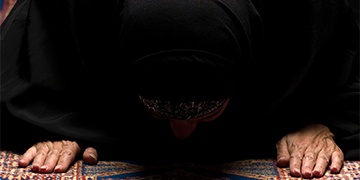“Calling ISIS ‘Muslim’ is like going to KFC, sitting down to eat a bucket of chicken, and calling yourself a ‘vegetarian’.” This protest against the way Islam is portrayed in Western media was but one of the insights I gained while conducting congregational studies in a church and a mosque that were sharing a common building. My study of this partnership, which challenges the ideological polemics surrounding Islam in contemporary political discourse, also revealed that the success of this relationship is due to the fact that it was not conceived according to an abstract notion of inter-faith dialogue, but rather as a partnership.
Since January 2011, the members of the Syed Shah Mustafa Jame Masjid mosque in Aberdeen, Scotland, have met to pray in St. John’s Episcopal Church. This situation emerged after the Christian priest from St. John’s noticed that the mosque was far too small for its community, so that many local Muslims had to pray outside in the cold. Witnessing the difficulty of these neighbours, the priest invited them to use the church space for prayer.
The priest’s decision was sharply criticised by some external critics, and it even earned the congregation a visit one Sunday morning by the Scottish National Front. Their spokesman accused the people of St. John’s of inviting “evil people” into their place of worship and “sharing Christ’s table with Satan.” But the priest’s rationale to invite overflow members of the mosque to pray inside the church was straightforward: “Jesus taught his disciples to love your neighbour as yourself and this is something I cannot just preach to my congregation, I had to put it into practice.”
When I interviewed members of St. John’s, it was apparent that this basic message resonated with the congregants. Morag put it this way, “The neighbour is not the person you like, or even the same religion. You don’t walk past your neighbour in need.” Craig, who admitted initial discomfort with the situation, told me that he found the rector’s reasoning compelling: “There is a clear theological vision here; it’s almost like there’s something pure in that, [which] I’d rather not weigh down with a bunch of caveats.”
The simplicity of the “love thy neighbour” rationale helped the community avoid getting bogged down in a lot of second-guessing. For example, at a gathering to discuss the situation, Morag recalls asking, “What will this say to the Muslims about Christians? Because their space is holy. They wouldn’t just say to us, ‘Come on in.’ Will they look at us and think, ‘Well their church means nothing to them’?” A short reply by the rector was sufficient to reassure her: “It doesn’t matter. It has nothing to do with what they think. It’s [about] what we think. It’s what we do.”
If the emerging partnership with the mosque spurred a deeper conversation within St. John’s about their own calling, it was evident as I interviewed members of the mosque that the relationship also had a profound impact on them. Aariz emphasised to me that what the church had done offered a powerful symbol to the Muslim community. He was excited to bring his children to the mosque to show them: “I told them that this is part of a church, donated to the Muslim community. That’s a great message!” Sabbir told me that he had joined this mosque precisely because of its relationship with the church: “This inspired me! [It] is a very, very peaceful atmosphere…. I’ve been in many places, but this really is an exception.” Talal simply shared how excited he was to tell his mother back in his native country about the partnership.
As I spent time with each community, attending their services and interviewing individual members, what came into view is that the success of the relationship was largely due to the fact that it was not motivated by an abstract concept of “inter-faith dialogue.” When I asked Elspeth, for example, whether she would like the two communities to discuss topics together, such as what Muslims think about Jesus, she burst out: “No! Ugh! Boring!” She elaborated, “Like, when I go to inter-religious services, I just want to poke my eyes out. It’s really nice as a symbol, but it doesn’t mean anything.”
Such conversations suggest to me that for meaningful relationships across differences to take hold in communities, those involved need to have their own personal reasons to engage. In this example, Christians must discover Christian rationales for interacting with Muslims, and vice-versa. Otherwise, the motivations for engaging with others will remain shallow and not very widespread within the community.
My two congregational studies revealed that this can not only be achieved, but that it brings with it many unforeseen rewards. The excitement with which Sabbir described the impact that the mosque-church partnership was palpable: “This inspired me – this coexistence between the church and mosque. I feel the divinity when I sit here. I find some spiritual development within me…. It helps me to do deep into our religion.”

